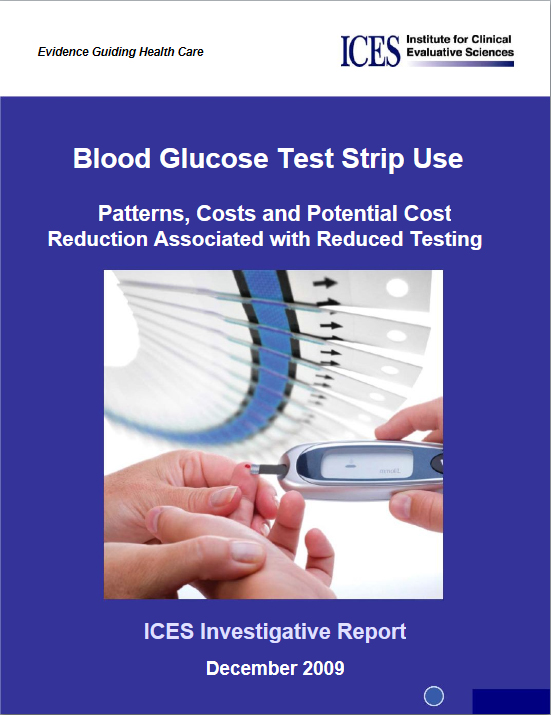Blood Glucose Test Strip Use
Background
Self-monitoring of blood glucose (SMBG) is common in patients with diabetes, but recent evidence suggests the practice has limited clinical benefit in many patients and may, in fact, be harmful in some cases. The use of blood glucose test strips has risen sharply over the past decade; however, the financial implications of this rise in use have not been explored. The purpose of this study was to examine the costs associated with rising blood glucose test strip use over the past 12 years. Furthermore, this study explores the cost impact of reducing glucose test strip use in elderly Ontarians with diabetes.
The Study
We conducted a retrospective cross-sectional time series analysis of annual prescription claims for blood glucose test strips between 1997 and 2008 for Ontarians with diabetes aged 65 years and older. Patients were stratified into one of four hierarchical diabetes therapy groups according to the most intensive glucose-lowering treatment received during each calendar year: insulin, oral glucose-lowering drugs with the potential to cause hypoglycemia, other oral glucose-lowering drugs, and no glucose-lowering therapy. Use and costs of blood glucose test strips were calculated annually for each group over the study period, and costs were projected to 2013. We then estimated potential cost reduction associated with five focused policy scenarios where blood glucose test strip use was reduced in subgroups of patients with diabetes.
Findings
- In 2008, more than 50% (n=263,513) of people with diabetes aged 65 years and older filled a prescription for blood glucose test strips, at a total cost of $85.5 million. Almost half of these patients were at low risk for drug- induced hypoglycemia, and these individuals accounted for nearly one-third of all costs associated with blood glucose test strips in this age group.
- During the study period, test strip use and costs increased in all patient subgroups. The number of patients receiving no glucose-lowering drugs who were dispensed blood glucose test strips increased more than four- fold over the twelve-year period, and the associated costs in this patient group were six times higher in 2008 compared with costs in 1997.
- The total cost of test strips for older Ontarians between 2009 and 2013 is projected to exceed $500 million; however, five potential policy scenarios in which test strip use was limited based upon patient characteristics have the potential to reduce overall costs by at least $26 million, and as much as $302 million.
Interpretation
Our analysis of the costs associated with blood glucose test strips in elderly Ontarians found that the implementation of policies that focus self-monitoring of blood glucose (SMBG) test strip use on patients likely to benefit from them could yield substantial cost reduction over the next five years. These resources could be redirected to more effective interventions for patients with diabetes.

